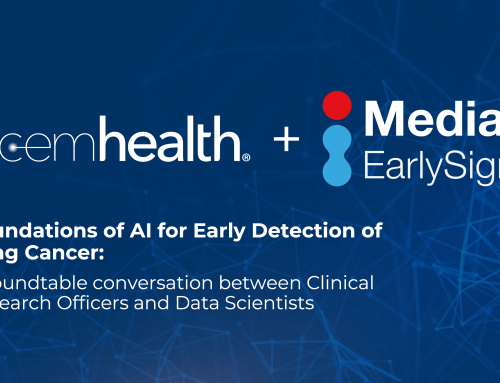
Prevention is Key: How AI-driven Early Detection Can Enhance Population Health Outcomes
An Introduction to AI for Early Detection
The adoption of artificial intelligence (AI) and predictive analytics is transforming the field of population health management. These cutting-edge technologies enable earlier and more proactive detection of diseases, allowing health systems to focus on personalized, preventative care instead of reactive treatment when a disease has already progressed. This shift towards early detection, diagnosis, and prevention has the potential to improve health outcomes for entire patient populations.
According to Deloitte, “AI-based solutions can effectively streamline diagnostic and treatment processes by using large amounts of structured and unstructured medical data across institutions. This can aid physicians at hospital and health systems in clinical decision-making by providing them with real-time, data-driven insights that they can alter and implement based on their personal expertise.” [1]
The Promise of Early Detection for Population Health Outcomes
Multiple large-scale studies have conclusively demonstrated that early diagnosis leads to significantly improved treatment outcomes and survival rates across a wide range of disease areas, including cancer, diabetes, cardiovascular disease, and various neurodegenerative conditions. [2] When provider organizations can reliably detect diseases in their early stages, more treatment options are available, which are typically less invasive, risky, and costly. This increases the likelihood of positive outcomes and extended life expectancy.
Advanced AI predictive models, such as those developed by Medial EarlySign, leverage vast amounts of multimodal patient data—including clinical, genetic, demographic, and behavioral data needed to accurately identify patients who are at an elevated risk for developing certain conditions, often months or even years before symptoms materialize. According to a recent breakthrough study published in NPJ Digital Medicine, state-of-the-art AI algorithms can now predict the onset of some diseases “with moderate-to-excellent discrimination up to 10 years in advance of the first clinical diagnosis.” [3] This enables providers to initiate preventive care plans, lifestyle interventions, increased screening, and counseling long before irreversible disease onset rather than waiting until the patient manifests symptoms and the condition has already substantially progressed.
Applications of AI for Early Detection
There are several key areas where AI and advanced clinical analytics techniques are being successfully applied to enable much earlier disease detection and improve population health outcomes:
- Risk stratification and predictive modeling – By analyzing extensive longitudinal patient data from electronic health records, insurance claims, pharmacy prescriptions, socioeconomic factors, and other relevant sources, sophisticated AI algorithms can identify individuals with patterns indicating elevated risk for conditions like heart disease, diabetes, cancer, dementia, and many others. [4]
- Natural Language Processing (NLP)- Advanced NLP techniques empower computer systems to extract contextual insights from huge volumes of unstructured physician notes, reports, and clinical narratives that may contain early symptomatic clues predictive of heightened disease risk. [5]
- Medical imaging analytics – Rapidly advancing computer vision algorithms applied to medical images such as x-rays, MRIs, CT scans, and mammograms can now identify very subtle anomalies and early indicators of many conditions, often imperceptible to expert human analysis. [6]
Real AI-Driven Early Detection Solutions That Can Demonstrate Value
Although still in its early phases industry-wide, impressive solutions from innovative model developers clearly demonstrate how AI-enabled early detection and preventive interventions can substantially improve health outcomes and lower costs. We partnered with Medial EarlySign to develop three Reveal early disease detection solutions to identify patients at a higher risk of:
- Progressing from prediabetes to diabetes within 12 months
- Undiagnosed diabetes
- Colorectal cancer and other GI disorders
Because these solutions rely only on readily available clinical data and the algorhitms have been validated in multiple, global health systems with findings published in leading healthcare journals. And with Lucem Health’s Reveal framework, these models are quick to deploy, integrate easily into existing IT infrastructure, and are supported by best practice care management guidelines.
Conclusion
Going against the rising tide of chronic diseases, these three early disease detection solutions can help you proactively improve population health, while at the same time, reducing costs and burden on already constrained provider resources. And without changing clinical workflows, active patient participation, or requiring extensive data and systems integration.
Note: This is part of a larger blog series for early disease detection developed in collaboration with our model developer partner, Medial EarlySign. Stay tuned for 3 additional blog posts in the coming weeks!
